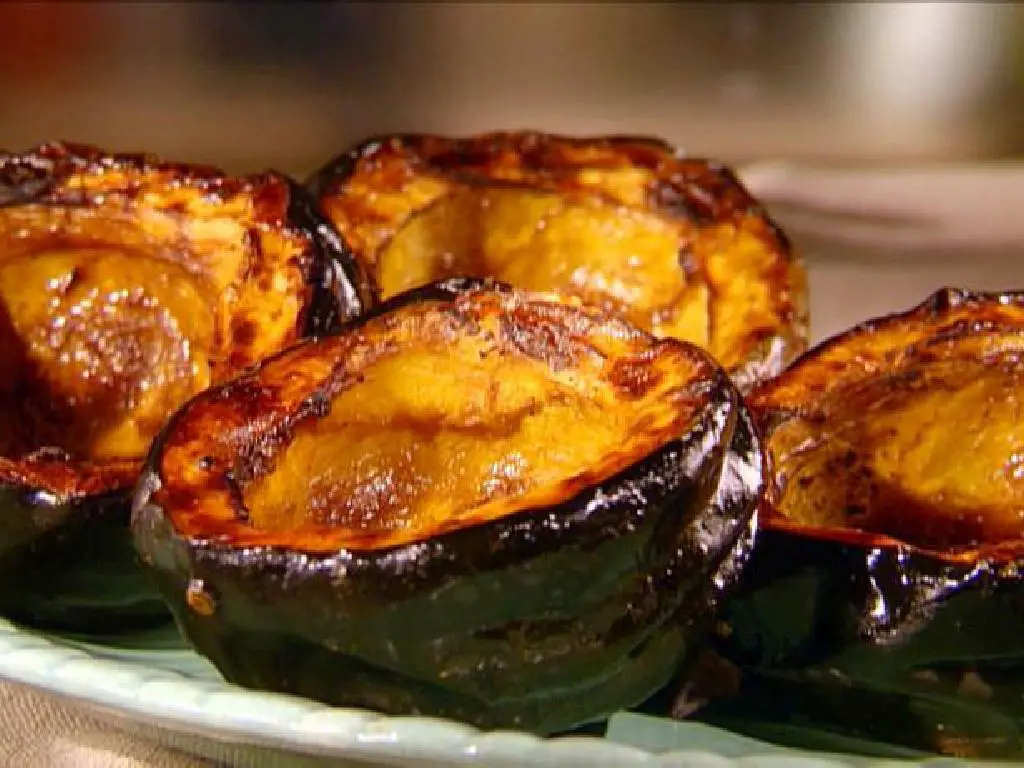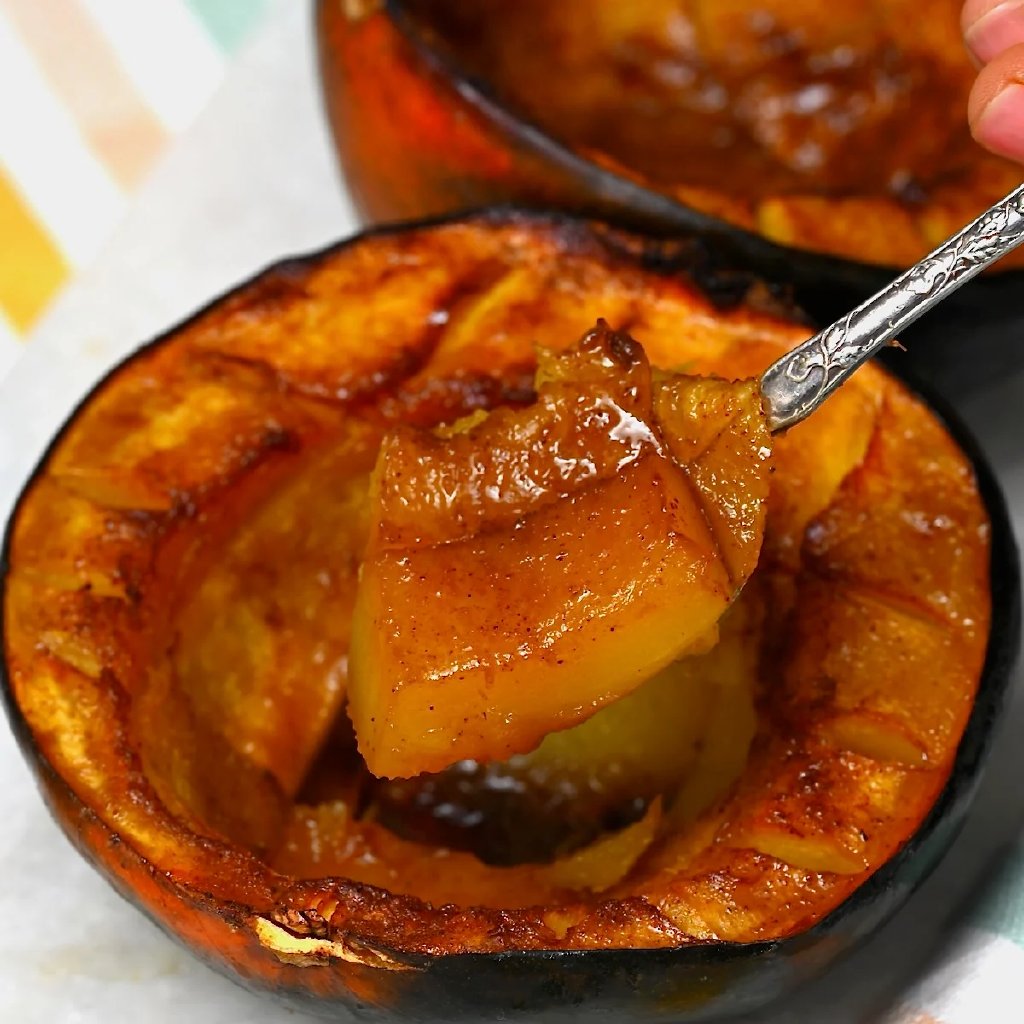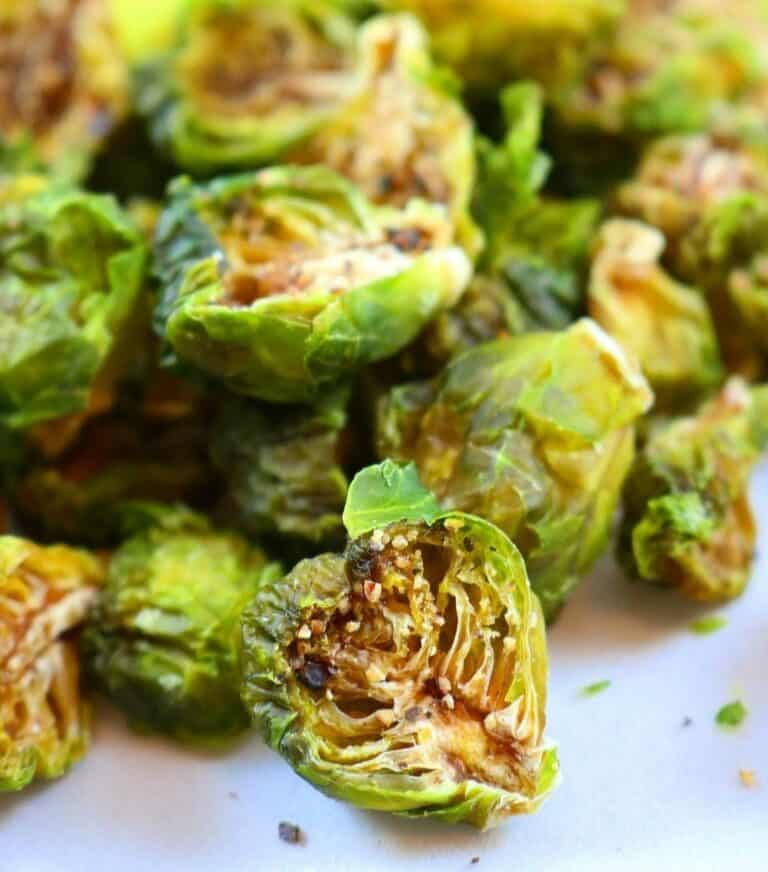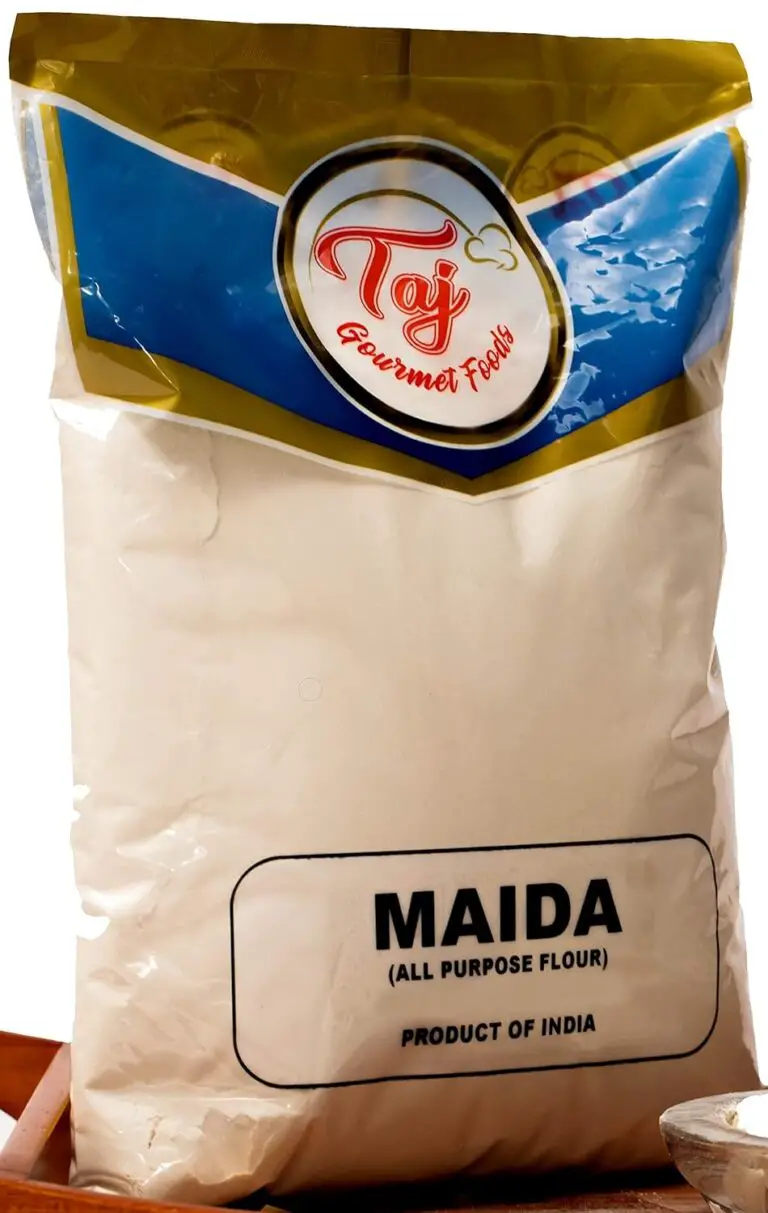Do You Cook Acorn Squash Up or Down in the Oven? Roasting Tips

Acorn squash is a delicious and healthy vegetable that can be cooked in a variety of ways. However, many people wonder whether they should cook it up or down in the oven. The answer to this question depends on the recipe and cooking method being used.
When roasting acorn squash in the oven, it is generally recommended to cook it cut-side down. This allows the flesh to caramelize and become tender, while also preventing the skin from burning.
However, some recipes may call for cooking the squash cut-side up, such as when stuffing it with other ingredients. In this case, the squash may be covered with foil to prevent the top from burning.
Overall, the best way to cook acorn squash in the oven will depend on the recipe and personal preference. By understanding the different cooking methods and techniques, you can ensure that your acorn squash turns out perfectly every time.
The Basics of Acorn Squash
Before delving into the cooking methods, let’s familiarize ourselves with the basics of acorn squash. This winter squash variety is known for its distinctive acorn-like shape, dark green skin, and vibrant orange flesh. Rich in vitamins, minerals, and fiber, acorn squash offers a nutritious addition to your meals.
Acorn Squash Varieties
Let us take a taste-bud-opening trip through the world of variety in acorn squash. Each type of acorn squash boasts a unique flavor profile, offering culinary enthusiasts a spectrum of tastes to savor.
Let’s decode how the choice of squash can significantly influence your cooking strategy, ensuring a harmonious marriage of flavors.
Acorn Squash Varieties and Flavor Profiles:
| Variety | Flavor Profile |
| Sweet Dumpling | Mild, sweet, and nutty |
| Table Queen | Rich, earthy, and slightly sweet |
| Carnival | Sweet, buttery, and reminiscent of chestnuts |
| Golden Acorn | Nutty, subtly sweet, and tender |
Understanding the distinct characteristics of popular varieties allows you to tailor your cooking methods to enhance specific flavor notes. For instance, the Sweet Dumpling’s mild sweetness shines when roasted, while the Golden Acorn’s nutty undertones benefit from a delicate sauté.
| Read: What Should I Do If My Acorn Squash Turns Orange? |
Preparing Acorn Squash

Here are some tips on how to prepare acorn squash for cooking.
Washing and Drying
Before cooking acorn squash, you need to wash and dry it thoroughly. Use a vegetable brush to scrub the exterior of the squash under running water to remove any dirt or debris. Then, pat the squash dry with a clean towel.
Cutting and Seeding
To prepare acorn squash for cooking, it must be cut and seeded. Use a sharp knife to cut off the stem and the bottom of the squash. Then, cut the squash in half lengthwise. Scoop out the seeds and the stringy pulp from the center of each half using a spoon or a melon baller.
When cutting acorn squash, do it with exercise caution. The exterior of the squash is tough and can be difficult to cut through. It is recommended to use a heavy-duty knife and to stabilize the squash on a cutting board to prevent it from rolling around.
Once the acorn squash is cut and seeded, it is ready to be cooked. There are various methods to cook acorn squash, including roasting, baking, and sautéing. The choice of cooking method depends on personal preference and the recipe being used.
| Also see: How to Freeze Whole Acorn Squash Without Blanching to Keep It Fresh |
Oven Roasting Basics
Acorn squash is a delicious and nutritious vegetable that can be roasted in the oven for a tasty side dish. Here are some basic tips for oven roasting acorn squash.
1. Preheating the Oven
Before roasting acorn squash, it is important to preheat the oven to the correct temperature. The oven should be preheated to 400°F (204°C) for roasting acorn squash. This will ensure that the squash cooks evenly and thoroughly.
2. Positioning the Squash
When roasting acorn squash, it is important to position the squash correctly in the oven. The cut side of the squash should be facing down on the baking sheet. This will allow the squash to cook evenly and prevent it from drying out.
3. Baking Time and Temperature
The baking time for acorn squash can vary depending on the size of the squash. Generally, acorn squash should be roasted in the oven for 45-60 minutes. The internal temperature of the squash should reach 205°F (96°C) when it is fully cooked.
To ensure that the squash is fully cooked, check the internal temperature using a meat thermometer. If the squash is not fully cooked, it can be returned to the oven for additional baking time.
Cooking Acorn Squash Face Down
In this section, we will explore the benefits of cooking acorn squash face down and provide some tips for even roasting.
Benefits of Face-Down Cooking
Cooking acorn squash face down can offer several benefits. Firstly, it helps to ensure that the flesh of the squash cooks evenly. By placing the squash face down, the heat is distributed more evenly throughout the flesh, resulting in a more tender and flavorful end product.
Another benefit of cooking acorn squash face down is that it helps to keep the moisture in. As the squash roasts, the moisture from the flesh escapes and condenses in the skin-created cavity. This helps to keep the squash moist and juicy, preventing it from becoming dry and tough.
Tips for Even Roasting
To ensure even roasting when cooking acorn squash face down, it is important to follow a few key tips. Firstly, make sure to choose a squash that is ripe and free of any blemishes or soft spots. This will help to ensure that the squash cooks evenly and has a tender texture.
Next, be sure to preheat the oven to the correct temperature before roasting the squash. This will help to ensure that the squash cooks evenly and has a crispy skin.
When placing the squash in the oven, make sure to position it in the center of the oven for even cooking. It is also a good idea to rotate the squash halfway through the cooking time to ensure that it cooks evenly on all sides.
Finally, be sure to allow the squash to cool for a few minutes before cutting it open. This will help to ensure that the flesh is tender and juicy and will prevent it from becoming dry and tough.
Cooking Acorn Squash Face Up
When cooking acorn squash, one of the options is to bake it face up. This method of cooking has its advantages and can be a great way to enjoy this nutritious vegetable.
Advantages of Face-Up Baking
One of the primary advantages of baking acorn squash face up is that it allows for easy seasoning and flavoring. The hollow middle of the squash can be filled with a variety of ingredients, such as butter, brown sugar, maple syrup, cinnamon, and nutmeg. This creates a delicious and sweet flavor that complements the natural taste of the squash.
Another advantage of face-up baking is that it creates a beautiful presentation. The golden brown skin of the squash contrasts nicely with the bright orange flesh, making it an attractive addition to any meal.
Seasoning Options
When baking acorn squash face up, there are many seasoning options to choose from. Here are a few ideas:
- Butter and Brown Sugar: This classic combination creates a sweet and savory flavor that is hard to resist. Simply fill the hollow middle of the squash with a pat of butter and a sprinkle of brown sugar before baking.
- Maple Syrup and Cinnamon: For a fall-inspired flavor, try filling the squash with maple syrup and cinnamon. This creates a warm and comforting taste that is perfect for chilly evenings.
- Savory Herbs: If you prefer a more savory flavor, try filling the squash with a mixture of herbs, such as thyme, rosemary, and sage. This creates a delicious and fragrant taste that pairs well with roasted meats and vegetables.
Tips for Perfect Roasting of Acorn Squash
1. Choosing the Right Squash
Start your culinary journey by selecting the perfect acorn squash. Look for squash that feels heavy for its size, with a firm and unblemished exterior. The color should be consistent, and the stem should be intact.
2. Prepping the Squash
Wash the squash thoroughly, and then carefully slice it in half. To make the cutting process easier, you can microwave the squash for a minute or two to soften it slightly. Once halved, scoop out the seeds and stringy pulp using a spoon or an ice cream scoop.
3. Seasoning and Flavoring
Now comes the fun part—seasoning! Create a symphony of flavors by brushing the flesh with olive oil and sprinkling a generous pinch of salt and pepper. Experiment with herbs like rosemary, thyme, or sage for an aromatic touch. For a hint of sweetness, a drizzle of maple syrup or honey works wonders.
4. Positioning in the Oven
As mentioned earlier, place the squash, cut side down, on a baking sheet lined with parchment paper. This ensures that the natural sugars caramelize, resulting in a succulent and flavorful outcome. Preheat your oven to 400°F (200°C) for optimal roasting.
5. Roasting Time
The roasting time can vary based on the size of your squash and your desired level of tenderness. Generally, a medium-sized acorn squash takes around 30-40 minutes. Keep an eye on it, and when the edges turn golden brown and a fork easily pierces the flesh, it’s ready to be savored.
6. Enhancements and Variations
Elevate your roasted acorn squash by incorporating additional ingredients. Consider stuffing the cavities with a mix of quinoa, nuts, or dried fruits for a hearty dish. Alternatively, sprinkle grated Parmesan or feta cheese during the last few minutes of roasting for a delightfully cheesy finish.
Roasting Acorn Squash: Up or Down – The Verdict
In the age-old debate of whether to roast acorn squash up or down, the verdict is clear: cut side down is the path to culinary perfection. By following these tips and techniques, you’ll unlock the full potential of acorn squash, transforming it into a dish that tantalizes the taste buds and adds a burst of autumnal warmth to your table.
Summary Table: Tips for Perfect Roasting
| Step | Description |
| 1. Choosing the Squash | Select firm, heavy squash with a consistent color. |
| 2. Prepping the Squash | Wash, halve, and scoop out seeds and pulp. |
| 3. Seasoning | Brush with olive oil, salt, pepper, and herbs. |
| 4. Positioning | Place cut side down on a preheated baking sheet. |
| 5. Roasting Time | Roast at 400°F (200°C) until golden and tender. |
| 6. Enhancements | Experiment with stuffing or adding cheese. |
In conclusion, the journey of roasting acorn squash is a delightful exploration of flavors and techniques. Armed with these tips, you are now ready to embark on your own culinary adventure, creating a dish that not only satisfies the palate but also elevates the humble acorn squash to a star on your dining table. Happy roasting!






